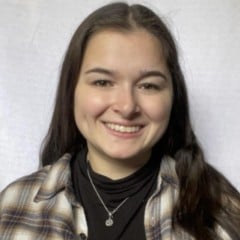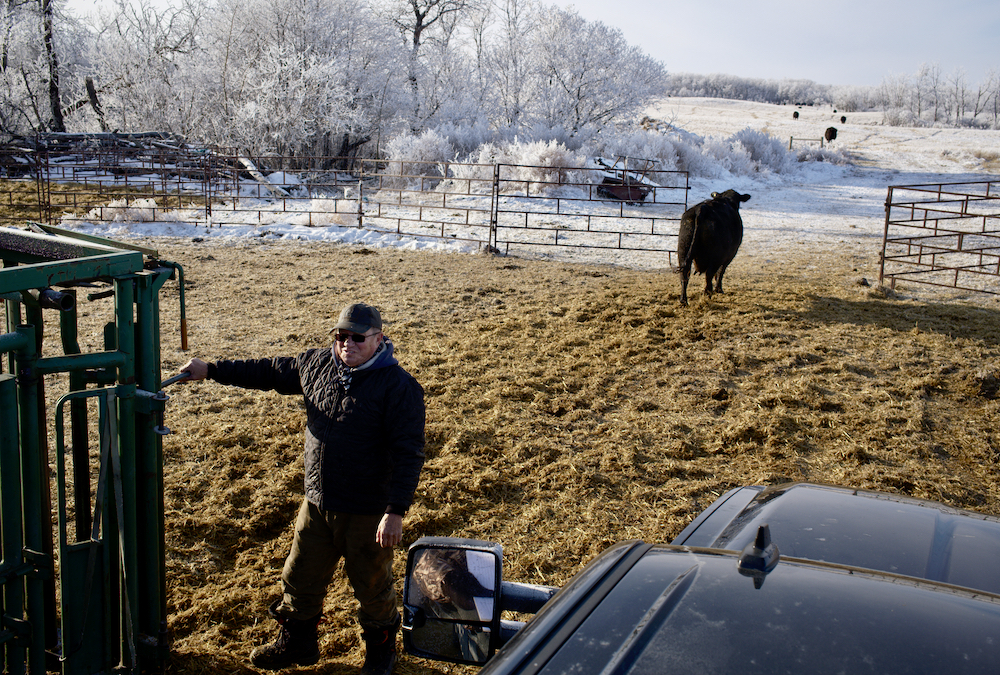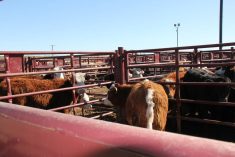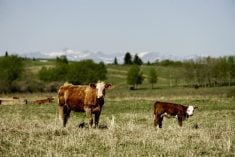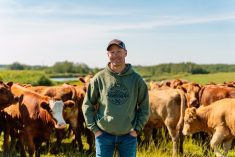Snow swirls outside the doors at Canadian Western Agribition in Regina, Sask., as winter falls on the city in November of 2022. However, the fluffy flakes that fill the streets don’t deter the crowds. All around are cowboy hats and worn-out baseball caps, a sign of defiance against the bitter cold and snow-heavy clouds.
Terry Lerat fits right in with his weathered ball cap as he walks through the grounds. After 65 years in the cattle industry, Lerat can be seen greeting many people he knows at Agribition, shaking their hands with a smile on his face. You can tell, just by looking at him, that this is a scene he is comfortable in — surrounded by livestock and talking about cattle.
“The cattle operation, that’s what’s in my heart right now,” Lerat says.
Read Also
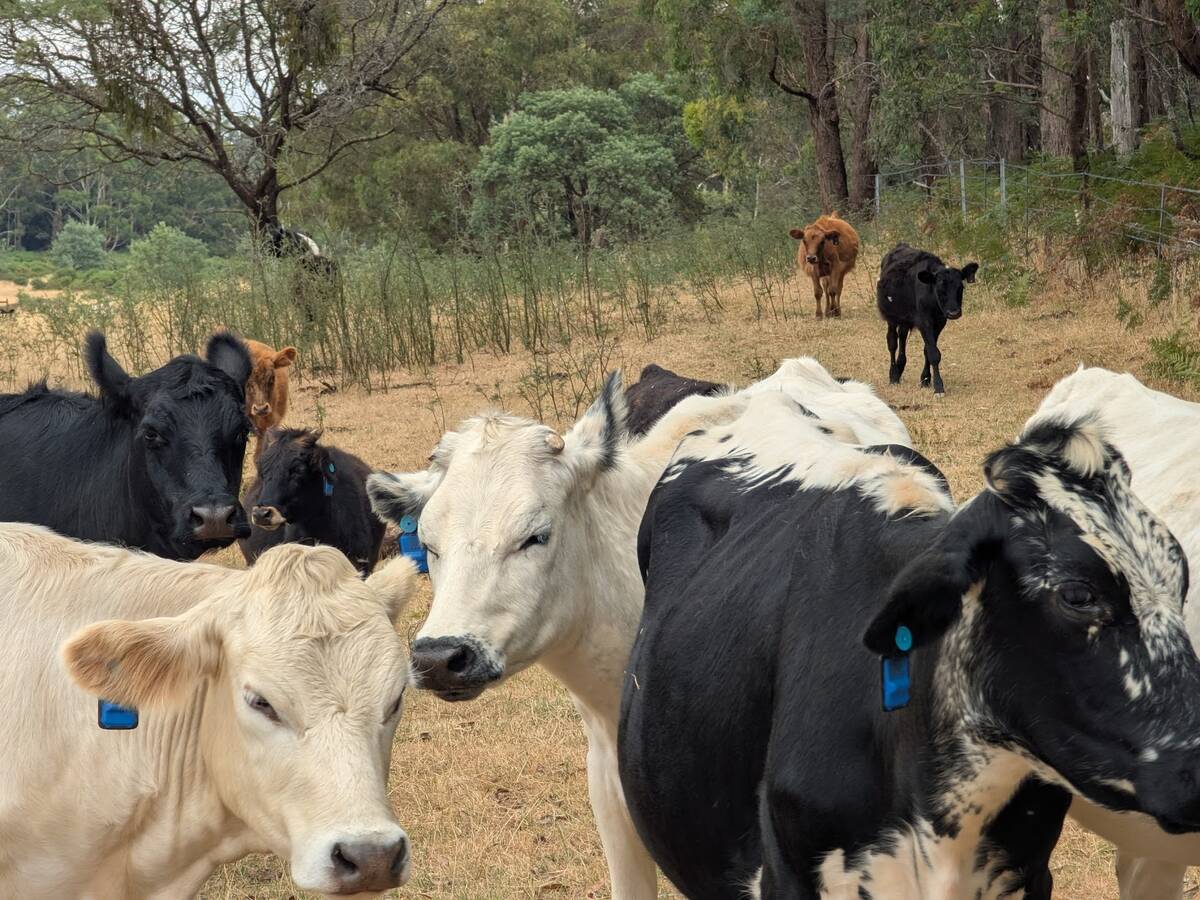
Australian company brings ear-tag tech to Canadian pastures
With Smart Paddock, beef farmers and ranchers can track their cattle through GPS technology
Growing up
Being raised on a farm with cattle, horses, chickens, sheep and pigs meant Lerat was exposed to agriculture at a very young age.
Lerat and his siblings all had chores to do on the farm after school every day, giving Lerat an appreciation for the work that is done in the industry. This was the start of his wanting to work with livestock for the rest of his life.
“The way they brought us up, it kind of helped me along in life,” Lerat says. “I stayed in agriculture all my life and it opened up the opportunities that I had.”
After Lerat graduated from high school, he went to work for the Prairie Farm Rehabilitation Administration, where he learned how to manage pastures and continued his education on cattle.
Not long after, he started his own herd.
However, even with all these roles, he was still working towards a different goal.
“It was my dream to build a cattle herd for Cowessess First Nation,” he says.
In 2010, Lerat would see this dream come to fruition as he helped Cowessess create what would come to be known as 4C Farms.
4C Farms
According to the Cowessess website, Cowessess First Nation was required to purchase a minimum of 21,575.9 hectares of land and had the option to purchase up to 76,638.7 hectares after a Treaty Land Entitlement claim was settled in March 1996.
According to the website, “Under the original terms of the agreement, once the minimum acreage was achieved, the remaining funds were allowed for economic development purposes. Cowessess reached shortfall in 2008.”
After the Treaty Land Entitlement settlement, Cowessess began purchasing land throughout southern Saskatchewan — including a yard site in the RM of Grayson, which eventually became 4C Farms in 2010.
The farm is a mixed cattle and grain operation and has Angus cows, 2,500 acres of pasture and hayland and 2,000 acres of grain land.
Lerat was part of the group in 2010 that helped set up 4C Farms, completing his dream of building a herd for his community. Although he left after the farm was established, he came back in 2019 as the ranch manager.
Lerat says a lot of the land Cowessess purchased isn’t suitable for farming but is suitable for cattle.
“I finally said we should buy our own cattle and run our own cattle on some of this marginal land and eventually evolve into farming,” Lerat says. “And that’s where we’re at now.”

4C workers
As ranch manager at 4C Farms, Lerat oversees herd health and feeding programs, equipment and facility maintenance, as well as mentorship and supervision of staff.
After several decades in the business, passing on the information Lerat has learned working with cattle is just as important to him as the work they’re doing on the ranch.
“Whatever I learned in my 65 years, I cannot teach it to my employees in one or two years,” he says. “My mind is always working: how can I make these guys understand and learn what I know?”
Currently, the ranch is operated by Lerat and two employees. He says his goal is to get the people who work on the ranch educated by keeping one employee feeding on the ranch in the winter and sending the other to post-secondary, and vice versa the following year.
“When I was young, I took the beef management and livestock management classes from SIAST (now known as Saskatchewan Polytechnic),” Lerat says. “So if I could send my guys there to learn why they are doing what they’re doing, it’s a steep learning curve for them because they were never involved in livestock (before) … they can sure do the work but they don’t know why. So, teach them that part and then move forward.”
4C work
The ranch at 4C Farms has a commercial herd with Angus cattle. Lerat says it’s important to him to find bulls from local Angus breeders to build the cow herd.
Currently, the herd is around 160 to 170 head, and Lerat says he doesn’t think they will expand the herd size unless they hire another employee.
In winter they graze as long as possible on native grass before they bring the herd into the feed yard.
Lerat says they do a version of rotational grazing in the summers but refers to it as more like “mob grazing,” where they’ll put all the cows on one quarter section for two or three weeks before moving them again. He says he’d like to do a more intense rotational graze but the land they’re on limits the intensity.
“The water situation is what dictates rotational grazing. So, this past summer, we dug three more dugouts in strategic locations. So that’ll just build on to my rotational grazing,” he says.
“The rotational grazing is definitely in play in the winter feeding. I’d like to feed them out on pasture and feed them just enough to maintain because we do have the grass out there where we could feed them just enough to maintain themselves but they still got to go out to forage. There’s still grass out there up to their bellies that can be used.”
When 4C Farms started, they had next to no facilities for a cattle operation — at the time, all that was on the land was a farmhouse. 4C Farms has come a long way since then.
“We’re building a cattle operation from the ground up because there were no facilities at all when we started; there was a house and a Quonset. So that’s something we started with. Every day I just think, how do we move forward?”
Community work
It’s not just the employees at 4C Farms that Lerat wants to educate, however. He wants to help educate students within Cowessess on agriculture and cattle so they can pursue jobs in the industry if they want to.
“I’m down to working with the school and once the grade 12s graduate, give them scholarships to go to a school of ag, for the ones that show interest. It’s really exciting,” he says.
Another goal is to get students on the land and working in agriculture. He’s looking into partnering with their local co-op to do this by potentially doing test plots in 2023 where students can help.
“I want to do test plots to involve the schools … the senior kids from grade nine up, get them involved with growing the test plots. Get them to understand what we’re doing,” Lerat says. “My plan is, when we harvest that crop, is to take that money and put it towards scholarships for the kids.”
Lerat says kids in Indigenous communities are two generations removed from agriculture, which means kids are often two generations removed from the land.
“I’ve got to start in the school teaching the kids the benefits of agriculture, or even opening their eyes to it,” he says.
“Bring agriculture back into their lives and get their lives revolved around agriculture. Give the kids something to do.”
Currently, Lerat is still developing this by discussing this possibility with people at the school, as well as potentially bringing Ag in the Classroom to Cowessess.
Even though Lerat is beyond the minimum retirement age, he says there’s too much to do before he retires.
“There’s so much I want to do before I slow down,” he says. “Let’s start with the kids in school and hopefully get somebody coming out there with a genuine interest to pursue higher education in agriculture. That’ll be a win for me.”
To Lerat, that’s what’s important — keeping people from his community on the land. “It’s all about utilizing our land now to our benefit.”

